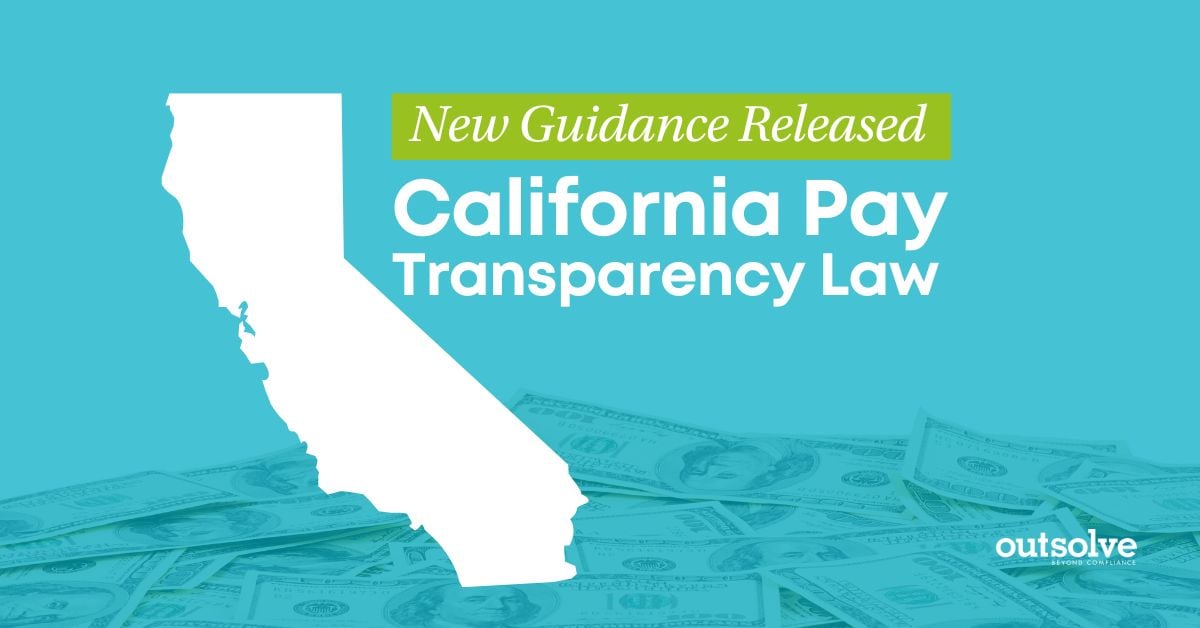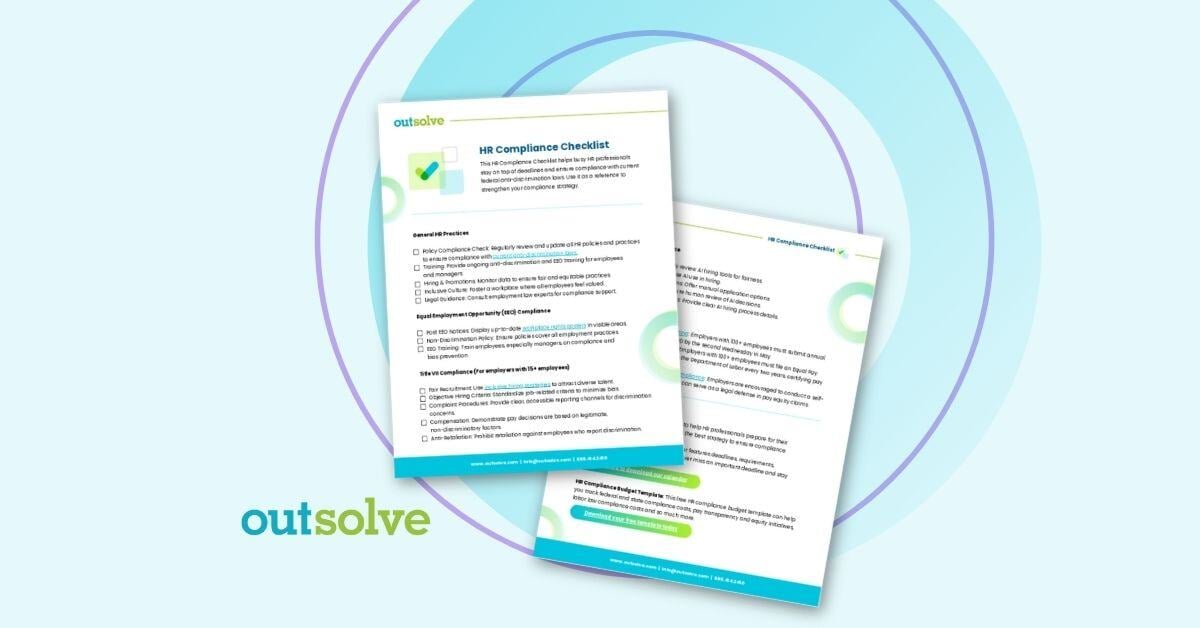2 min read
New Guidance Released on the California Pay Transparency Law
![]() OutSolve
:
Jan 6, 2023 11:00:00 AM
OutSolve
:
Jan 6, 2023 11:00:00 AM

Effective January 1, 2023, and impacts all employers with at least one employee working in California
As the updates to the California Equal Pay Act go into effect on January 1, 2023, the Labor Commissioner released new frequently asked questions (FAQs) to clarify its interpretation of the new pay transparency requirements. The following FAQs have been added applying to the pay transparency provisions.
FAQ 22 – How long must an employer keep records of employee wages and wage rates? Starting January 1, 2023, records of a job title and wage rate history for each employee must be kept for the duration of their employment plus three years after the end of their employment.
FAQ 29 – Is an employer required to include the pay scale on job postings? The pay scale must be included within the job posting if the position may ever be filled in California, either in-person or remotely.”
FAQ 30 – Who is counted as an employee to determine whether an employer has 15 or more employees? The 15-employee threshold is to be consistent with how an employer counts employees for the purposes of 2022 COVID-19 Supplemental Paid Sick Leave and phase-in for the new minimum wage rates. At least one employee must be in California.
FAQ 31 – How is “pay scale” defined? The salary or hourly wage range the employer reasonably expects to pay for a position. If there is no range set and the employer plans to pay a set hourly amount or piece rate, they may provide that amount instead.
FAQ 34 – Can employers link to the salary range in an electronic posting or include a QR code in a paper posting that will take an applicant to the salary information? No, the pay scale or flat rate must be provided. No links to the wage information are permitted, nor are QR codes allowed as a substitute for providing the wage information in the job posting.
FAQ 36 – What happens if an employer violates Labor Code Section 432.3? Employers may be subject to civil penalties of no less than $100 and no more than $10,000 per violation.
FAQ 37 - Am I protected from retaliation if I complain about an Equal Pay Act violation? Employees have two courses of action, accomplished within one year of the alleged complaint: (1) file a written complaint with the Labor Commissioner or (2) file a civil action for retaliation in court.

OutSolve’s Take
With the new year comes additional pay transparency requirements for employers with at least one employee working in California. Systems should be set up to ensure that all job postings include either the wage range or flat rate for which the position is to be paid. Impacted employers should review all the state’s FAQs to ensure full compliance with the requirements.
Employers should also consider conducting in-depth analyses of their compensation plans to determine whether certain demographic groups are represented in the higher-paying vs. lower-paying jobs within the organization. For clients who wish to take preventive measures to evaluate their pay practices, OutSolve’s Pay Equity Analysis Services are available. Additional information on OutSolve’s Pay Equity Analysis or other compliance services may be obtained at info@outsolve.com or by calling 888-414-2410.
Other relevant OutSolve blogs:
- California’s Department of Fair Employment and Housing (DFEH) issues FAQs on Pay Data Report [12/3/2022]
- California Senate Bill 973 [10/2/2022]
- California Sending Failure to File Enforcement Notices to Employers [11/16/2022]
- California Senate Bill Increases Pay Data Reporting and Pay Transparency Requirements [9/6/2022]
- California Passes SB 1162 to Advance Pay Transparency and Pay Data Reporting Requirements [10/7/2022]
Founded in 1998, OutSolve has evolved into a premier compliance-driven HR advisory firm, leveraging deep expertise to simplify complex regulatory landscapes for businesses of all sizes. With a comprehensive suite of solutions encompassing HR compliance, workforce analytics, and risk mitigation consulting, OutSolve empowers organizations to navigate the intricate world of employment regulations with confidence.
Weekly OutLook
Featured Posts

New Year, New Deadlines: 2026 HR Compliance Calendar

outRageous HR: Plan Now or Pay Later
Related Posts

Understanding the EU Pay Transparency Directive
If you have employees in the European Union, or even some working remotely in an EU member state, then there’s a new law you need on your radar. It’s...

What Employers Need to Know About the Delaware Pay Transparency Law
Rules around compensation and pay transparency continue to increase across the country with more states enacting new pay transparency laws. Delaware...

What is an Immigration Enforcement Raid?
There has been a dramatic increase in immigration enforcement activity under the Trump administration. Increased scrutiny from federal agencies has...
